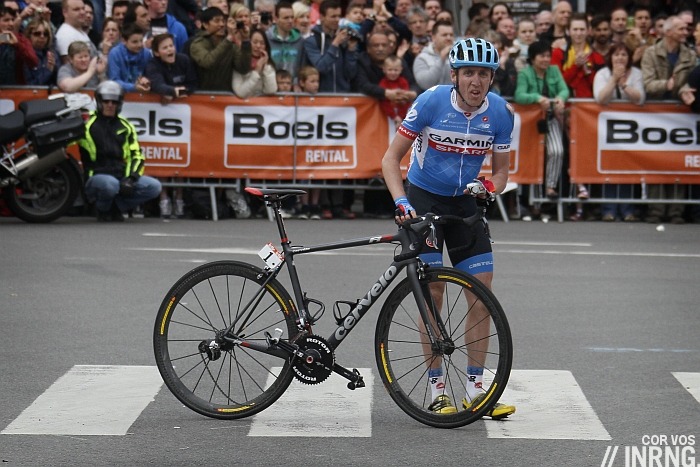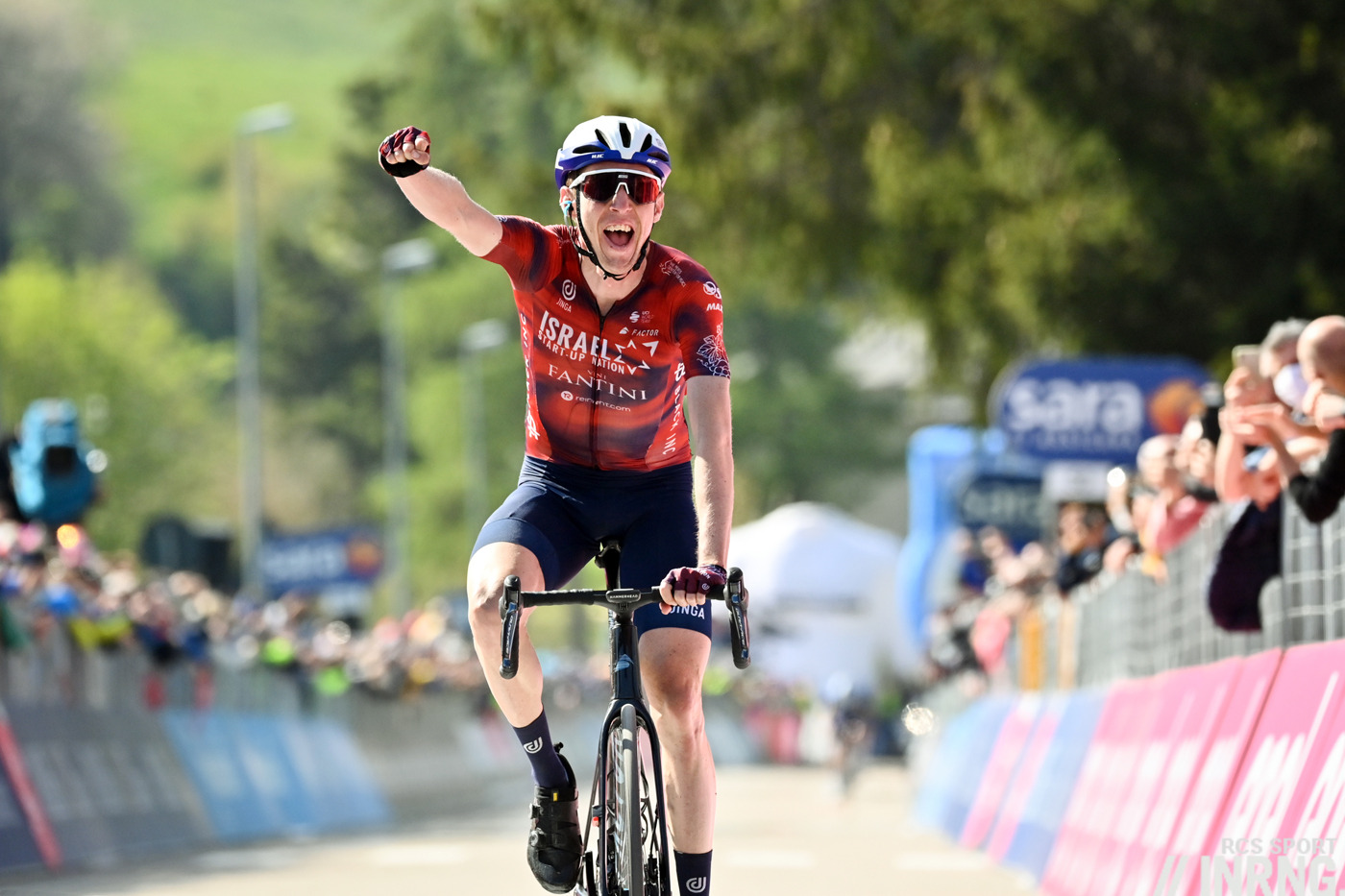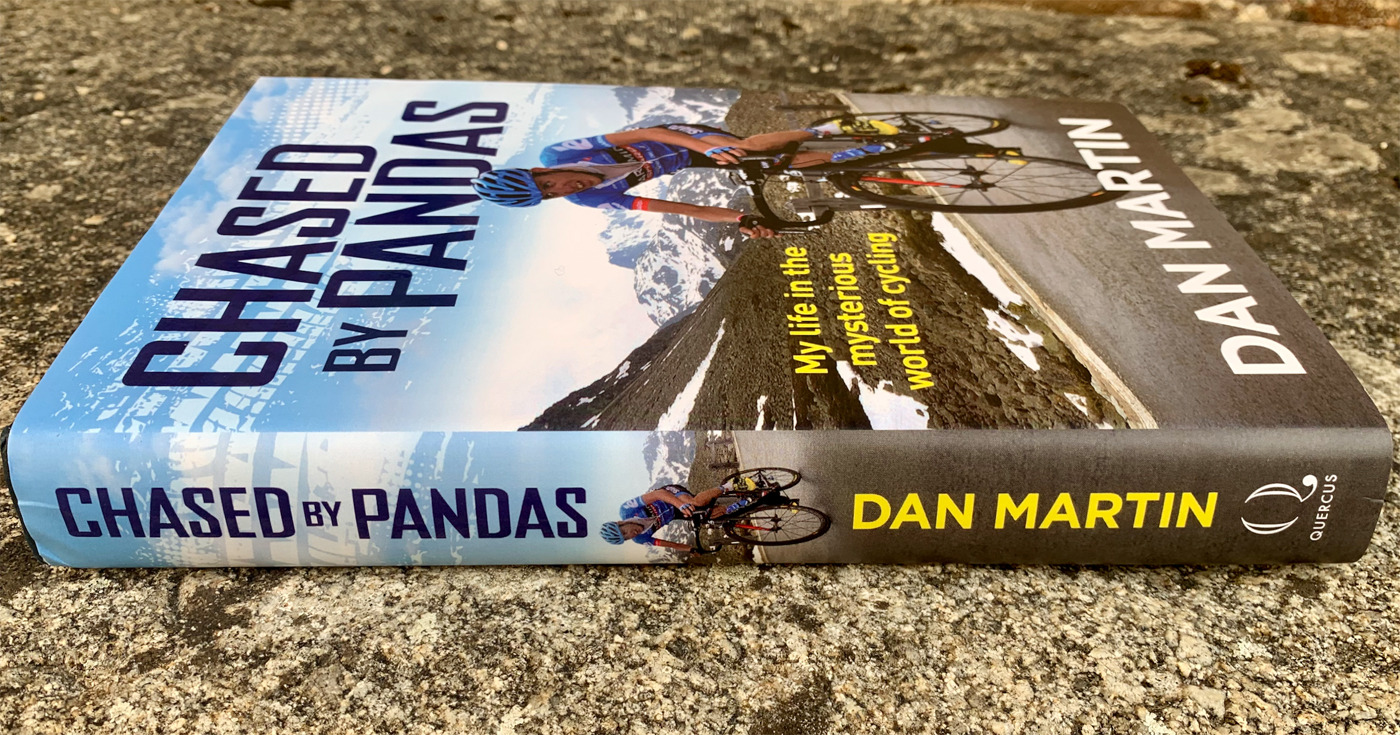What’s in a title? “My Way” wouldn’t be original but it could be deserved. Dan Martin said no to British Cycling and even changed nationality to forge his own path, reinventing himself several times along the way to win two monuments and stages in all three grand tours. He’s had an interesting column over the years with Pro Cycling magazine and recent media appearances, like The Cycling Podcast, are always worth listening. So a whole book is promising…
To reprise an old theme Dan Martin’s win in the 2013 edition of Liège-Bastogne-Liège was huge for him and his team. But others in the peloton also saw great significance, young riders like Romain Bardet thought if he could win then maybe they could as well. Martin seemed to break a glass ceiling, his win suggested the top steps of the podium weren’t reserved for those entangled in doping scandals. As an autobiography this book can’t explore what others thought but this unwitting pioneer angle alone makes him an interesting rider whose career spanned plenty, starting with the old-fashioned way of making his way to a French amateur climb in the hope of attracting attention via results in Europe. A Brit, he was outside of the GB Sport system because he didn’t fancy track cycling, “I couldn’t see myself racing around a velodrome like a hamster in a wheel” he writes.
The book isn’t a straight chronology of Dan Martin’s cycling career. Instead each chapter explores a particular fear, whether crashing, injury or the burden of leadership and through this the arc of Dan Martin’s cycling career is covered. Now the headings mention phobias but it’s more a theme to explore rather than a catalogue of negatives.

The opening chapter is about the fear of crashing and reprises Martin’s wipe-out on the final bend of Liège-Bastogne-Liège, he’d given his rivals the slip and was just about to overhaul Giampaulo Caruso only to slide out in sight of the finish line. Here Martin reveals a mystical side:
the most rational hypothesis was that there was an oily residue on the road at that point and the dampness in the air had made it slippery. The irrational hypothesis was that it was down to fate. This explanation was both comforting and unsatisfactory, but I liked it. It was written that I would win in 2013 and lose in 2014…
…Even though I think I can safely say that I’ve got a rational mind, I ended up developing an almost mystical rapport with the bike. I accepted that invisible forces were moving against us, with us, around us. As a consequence, I’ve often found that crashes don’t occur completely by chance, you’re actually drawn towards them.
Many riders have their superstitions, such as putting their right shoe on first and so on. Martin seems to be on a higher level, there are later examples of him having premonitions of victory, sending messages to his family to say “I’m going to win today”. On a recon ride in the Alps ahead of the Giro he explores the Sega di Ala climb and a gets a “very strong premonition”. Sure enough Martin won.

Perhaps planning accounts for plenty, after all if you find a climb that suits, if you know you’re on form and are targetting mountain stages in the third week of a grand tour then the odds begin to narrow, all the same the confidence is notable. The book is packed with anecdotes to the point where some are almost mentioned in passing, his decision to change nationality gets less than page when it could be a bigger deal. A racer caught riding in a van during a stage race isn’t named, the commissaires eject the rider and conspire to say the rider was ill. Many anecdotes get a paragraph or two but could be a whole chapter although the hardback already runs to 300 pages.

Martin changed teams several times during his career and while signing announcements are usually accompanied by cheery attributed quotes, the autobiography, combined with retirement, allows Martin to be more frank. He explains some of the fallouts he’s had with team managers over the years. His time at Quick-Step seems the best, one small anecdote goes a long way to explaining the “wolfpack” mentality: at the December training camp everyone sits down for dinner together, riders, mechanics, soigneurs all mixing. His time at UAE explains how much the team might have had more money but it was still the Lampre team underneath: an old fashioned squadra where things get off to a bad start with a clumsy bike fitting before he even pulls on the jersey. Things go from bad to worse, while outwardly their bid to make him a GC contender didn’t work, Martin reveals he was close to breaking his contract and ending his career.
Along the way there are oddities, Martin’s been one of a handful to reject traditional post-race massages – they are a ritual, can be relaxing but there’s little evidence to suggest performance gains. The biggest oddity is The Panda. Who was it that chased him up the climb in Ans, and why the ursine costume? Perhaps the Panda is wondering how Dan Martin got there and what he’s done since, and that’s where this book comes in.
The Verdict
An enjoyable read from an idiosyncratic rider who did things his way. As an autobiography this saunters through Martin’s career and given plenty happened there’s a lot to cover. The most interesting aspect is Martin and his approach the sport and there are often moments in the book where you wish for more, as if you could pause the autobiography and ask for more opinion but hopefully there’s a second career ahead for this.
The book is published by Quercus and available in hardback, ebook and audio, and there is also a French version, A La Poursuite du Panda, “In Search of the Panda”.
- More book reviews at inrng.com/books


The thing that I remember most about Martin is him being totally wiped out by Porte and showing no resentment for the fact. He was fairly badly injured but battled on without any rancour. How often do you see that these days.
He covers this crash on the Mont du Chat in some detail, his thinking of why Porte was a good wheel for the descent, how he had an unwritten pact with Porte for the Tour that year and more. Many probably remember the video of him hobbling around, struggling to walk yet able to race on the bike.
Thanks for an interesting review; sounds like an interesting book, too!
I read in CN the excerpt about the way he left Vaughter’s team and it really raised several big question marks about the way that team was being managed and how did it change so much (did it?) through the years. Of course, that’s just Martin’s side of the story.
It’s hard to tell if this was just a communication blunder that got out of hand, each side not listening to the other… or worse, management frustrated with him. I won’t spoil the book but there’s more in the book than the edited extracts on CN, you can see more sides to things.
They don’t seem to be very good at communication; David Millar’s book gives a similar impression.
I haven’t read Martin’s CN piece yet but Phil Gaimon’s book as also really critical of JV. Two sides to every story but I presume the facts were in order because if they weren’t I’m sure JV would have demanded a retraction.
JV is also critical of JV in JV’s book. In there he mentions being diagnosed with Asperger syndrome, where one of the challenges is with social interactions.
Thanks for the review – sounds like a good read. I’ll put it on my list to Santa!
In a peloton which sometimes seems populated by smooth-pedalling clones, it was always pleasing to be able to pick out Dan with his distinctive, inelegant but effective style. All the effort and passion was on show. Other riders can look easy then blow. Dan wasn’t like that.
As for the panda, there’s a tweet from someone called inrng in Jan 2014
“Dan Martin gets chased by a panda costume which leads to WWF sponsorship. What if Hesjedal had won in Liège instead?”
https://twitter.com/inrng/status/419202040380678144?lang=en-GB
…accompanied by photos of Martin being chased by the panda and Hesjedal chased by someone dressed as a Scottish clansman
Walkers Shortbread biscuits? 😉
That’s what you twittered back in 2014 :o)
Nah – Tunnocks Teacakes !
Pro road racing is a shitty job environment. Even for those close to the top end of the performance spectrum.
I’ve known this for a long time but it still always hurts me to read those stories. So, no, thanks, I’ll refuse to read Dan’s autobiography and use the spared time in a more constructive way.
Yet for some reason you follow the sport (I assume) and post your thoughts here? I don’t think you need to REFUSE to read the book as nobody’s gonna force it on you, are they?
Easy Larry, you don’t need to come here and police fellow readers and their comments.
Martin’s book does cover the difficulties of his career, but also the fun along the way too.
Indeed – policing is MY job!
When I started watching races more regularly I for some reason developed an almost instant antipathy to Dan Martin. He wasn’t the only one, of course, and the riders I loved to dislike came in all shapes and types – but somehow he grew on me and by the time he won Liège–Bastogne–Liège in 2013 he had won me over.
There are of course more constructive ways use one’s time than to read road cyclists’ autobiographies, but I dare say – even before I’ve read the book myself – that STS would be positively surprised if he bought (or loaned) the book and wasted a couple of hours of his time by reading it!
Dan Martin was one of My favorite riders.
One of my favourite cyclists, exciting attacking style, yet by no means “stylish”, and I was endeared to his pained expression, clearly showing how much suffering is needed to succeed.
I’ve bought the book although haven’t read it yet, but doubt whether this anecdote has made it.
The time is the early 2000s, the place south west English midlands, not far from where Dan grew up, the scene a British Cycling seniors race, five or six laps of an undulating circuit with an off circuit hill finish, about 80/90ks, I was a veteran making up the bunch.
A break of three or so went early, the pack rode steady waiting for the last lap or two to wind things up.
But about half way this tiny stripling of a lad rocketed out of the bunch to disappear up the lane ahead. Clearly no danger, we let him go.
Attacks started later, but the break stayed away. Yet imagine our surprise when we got back to the HQ for the results and a cuppa: the lad had ridden over to the break, then straight over them to take to win. That lad was a junior named Dan Martin.
I’ve been a fan ever since.
(Just a shame he and nicole cooke were so egregiously treated by British Cycling – but that’s for another day)
Great anecdote, and that’s the beauty of this sport. Very rarely in sports do regular mortals who are undoubtedly athletic get to race against these hyper talented youngsters (and get our hats handed to us!). I’ve heard similar stories about a young Mike Barry (from Toronto, Canada – same as me). He would show up to race as a super skinny kid and destroy the older cat 1’s.
Not many other sports would the general public (other than the kid’s direct age group elite squad) get to do that…
Thanks for the story, and Inrng thanks for posting this, I’m really tempted to ask for it for Christmas now.
Was a huge fan of Dan Martin ever since the Liege win, where he displayed an unbelievable level of cool to just tail-gun the pack and pick his moment. I’ve always aspired to race like that since (rarely succeeding thanks to adhd driven impulsiveness) but it was so clinical and enjoyable to watch him constantly positioning himself in the right place the whole way through that day. I was gutted he didn’t get the repeat the year after.